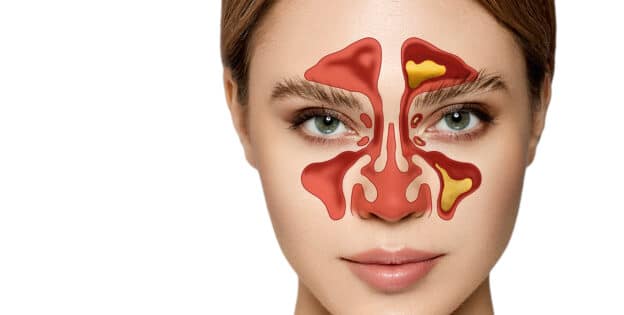A nebulizer is a device that turns a solution into a fine mist for administration to the respiratory system. When we are talking about a traditional nebulizer, there is often a face mask attachment so that the medication can be delivered to the lungs. A nasal nebulizer is specifically designed to target the nasal passages and sinuses and not reach the lungs. There are many conditions that affect the nasal passages and often therapy needs to target only this part of the respiratory system.
What is Nebulization?
The definition of nebulization is simply the conversion of a liquid into a fine spray. The method for achieving this, the targeted treatment area, the type of solution, and more can all determine how this is done. When we are referring to nasal nebulization we are referring to the conversion of a liquid medication into a fine spray that is intended to not reach beyond the sinuses. The medication is intended to stay in the nasal passages and sinuses and not enter the lungs.
Typical Nebulizer Systems
The typical nebulizer that many people are familiar with is a device that assists in administration of medication to the lungs. This may be used to treat asthma, COPD, and other respiratory diseases. The part that has contact with the patient may either be inserted into the mouth or be a face mask that covers both the nose and mouth.
There are a few different methods these devices use to change the solution into a form suitable for inhalation. One method is using compressed air or gas which flows through the solution at a high velocity. This turns the solution into an aerosol that is inhaled through the tubing of the device connected to the patient’s face mask or mouth piece. This type is commonly used but can be loud and less portable than some other methods.
A soft mist inhaler is a type of nebulizer that does not use a propellant like gas or air. Instead this method uses the tension of a spring that when released propels the liquid through nozzles that create a soft mist. This method is sometimes called a hand driven nebulizer.
Other forms of nebulizer are electrical and use technologies like ultrasonic wave or vibrating mesh. These types of nebulizers are efficient, especially the newer vibrating mesh devices, however they tend to be more expensive.
Nasal Nebulizer
All of the types of nebulizers outlined above are intended to administer medication to the lungs. This method of administration allows a rapid onset of action and less systemic effects than other methods that may be used to treat respiratory conditions. The principle is similar when considering a nasal nebulizer which is used to treat the nasal passages and sinuses in a targeted way. Nasal spray devices can be used to administer medication directly to the nasal passages for conditions like congestion and allergies. However the nasal route is also sometimes used to administer medication systemically. For example, treatments for migraine may be administered through a nasal spray or nasal nebulizer.
The particles that are dispersed with a nasal nebulizer are larger than those nebulizers that are intended to treat the lungs. In a study of the Rhino Clear Sprint it was shown that the majority of particles are distributed within the nasal passages and sinuses with a very small percentage of particles that could reach beyond this area. For the analysis, the atomizer (also called a nasal nebulizer) was tested at 4cm from the detector beam and sprayed vertically. The sample was investigated for droplet size distribution. It was found in testing that < 3% of the particles dispersed by the RhinoClear are smaller than 10 micron, which is a common standard for determining if a particle can reach the lungs.
Nasal nebulization differs from irrigation. Irrigation is a much higher volume treatment that involves a large volume of solution being poured into the nasal passages which then is discharged. Nebulization in comparison involves a smaller volume of solution that is administered in a finer mist, resulting in some discharge but not as much as with irrigation.
What Medications Are Administered with Nasal Nebulizers?
When treatment is intended to be localized to the nasal passages and sinuses the types of medications used include antihistamines, corticosteroids, decongestants, and regular saline. Many of these medications work to alleviate inflammation or open up the nasal passages. Individuals experiencing runny nose, congestion, itching, sneezing, and more use nasal spray medications that are sometimes sold over-the-counter.
Many patients who use a nasal rinsing device like a nasal nebulizer use it with a saline solution. The use of saline can help clear the nasal passages and improve nasal functioning.
Saline Rinse with a Nasal Nebulizer
Numerous clinical trials have confirmed the benefits of nasal rinsing with saline. Studies have shown that a saline rinse can reduce the severity of nasal conditions like allergic rhinitis. The benefits tend to outweigh any adverse effects associated with their use. In general there are few adverse effects reported with daily use of a saline rinse.
Articles
Nasal saline irrigations for the symptoms of chronic rhinosinusitis – The Cochrane database of systematic reviews
Consensus guidance of nebulizer therapy for acute rhinosinusitis – Auris, Nasus, Larynx


